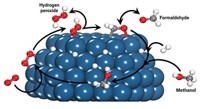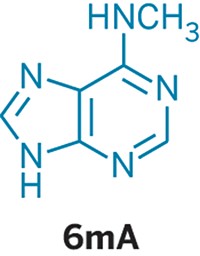Advertisement
Grab your lab coat. Let's get started
Welcome!
Welcome!
Create an account below to get 6 C&EN articles per month, receive newsletters and more - all free.
It seems this is your first time logging in online. Please enter the following information to continue.
As an ACS member you automatically get access to this site. All we need is few more details to create your reading experience.
Not you? Sign in with a different account.
Not you? Sign in with a different account.
ERROR 1
ERROR 1
ERROR 2
ERROR 2
ERROR 2
ERROR 2
ERROR 2
Password and Confirm password must match.
If you have an ACS member number, please enter it here so we can link this account to your membership. (optional)
ERROR 2
ACS values your privacy. By submitting your information, you are gaining access to C&EN and subscribing to our weekly newsletter. We use the information you provide to make your reading experience better, and we will never sell your data to third party members.
Environment
Chemical Safety: Dangers Of Diglyme
July 12, 2010
| A version of this story appeared in
Volume 88, Issue 28
Reading the investigators’ account of the T2 Laboratories explosion, which was attributed to metallic sodium and hot diglyme, we suspect this may be an example of a much wider phenomenon, already met in other guises (C&EN, Sept. 21, 2009, page 8). A previous account of a violent runaway in diglyme, postulated as powered by reaction with finely divided active metal (in this case aluminum) has long been in “Bretherick’s Handbook of Reactive Chemical Hazards,” but, having its primary entry under “lithium aluminium hydride,” might be missed by the hasty searcher.
We are also strongly reminded of the Seveso, Italy, accident of 1976 (and its several precursors). Investigation showed that these were the result of a high-temperature, base-induced decomposition of diethylene glycol, or ethylene glycol itself, to materials including hydrogen and water, the coreagent sodium hydroxide, not sodium metal, and the temperature again around 200 °C.
Thermodynamic calculations from “Heats of Formation” suggest that 1,2 diols are higher energy than they look and may dehydrate exothermically. This, no doubt, is why biology finds sugars so useful as fuels and energy stores (and why sugar refineries occasionally have explosions from a hot molasses decomposition usually attributed to Maillard reaction with protein impurities).
Capping the glycol as an ether, so that methanol, or dimethyl ether, is eliminated rather than water, will do little to the thermodynamics—and perhaps not much to the kinetics—of reaction. The simplest diethyleneglycol ether, dioxan, is known to decompose exothermically at around 200 °C.
Martin J. Pitt
Assistant Editor, Bretherick’s Handbook
Chemical & Process Engineering, University of Sheffield
Sheffield, U.K.
Peter G. Urben
Editor, Bretherick’s Handbook
Kenilworth, U.K.





Join the conversation
Contact the reporter
Submit a Letter to the Editor for publication
Engage with us on Twitter